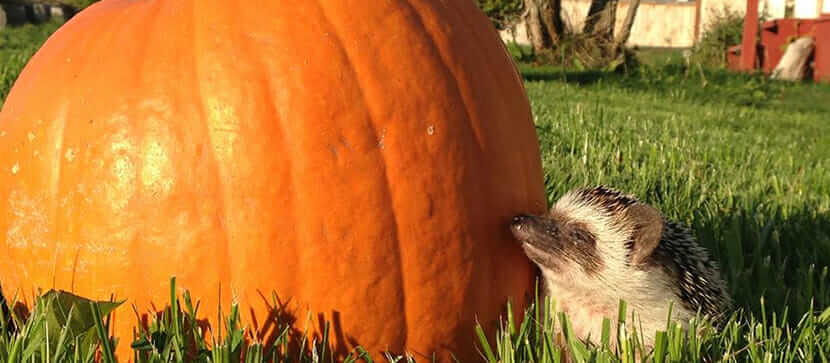Hedgehog Simple
by Jenna Barrett
Here at the Whidbey Institute, we spend a lot of time chatting about what brings us together. Is it the land, the great wealth of wildness in a world that is becoming increasingly un-wild? Is it the exhilarating connection to the Great Work as imagined by Thomas Berry, and the generations-long dedication to growing and learning in its spirit? Is it our fellow volunteers and participants, with whom we work and bond, and who sometimes become lifelong friends who share with us a resonating call of place and purpose?
Is it all of these things?
If it is all of those things, then it must be more than just those things. Logically, by being an institution that precipitates this mysterious, powerful connection of spirit, mind, work, and wonder for every individual that comes here, every single impression is unique. They probably all stubbornly defy definition, too.
Think of it like this: it’s your job to draw a tree. What you have to work with are descriptions by every single person that saw the tree in the last 45 years. It’s a pretty awesome tree, for sure, but no one description is going to genuinely reflect everyone’s notion of it. Oh, and you’re also looking at the tree yourself and seeing something similar, but different―and every bit as powerful.
On some days I find this magical, mystical, and thrilling. On other days it just gives me a headache.

Here is a Doug fir I drew once. It may or may not look anything like any Doug fir you’ve ever seen.
3 Ways Hedgehogs Bring Clarity
When I discovered clarity was what I needed, I immediately thought of hedgehogs. Here’s why:
1: Common Sense Hedgehog
An ancient Greek poem first describes the concept of the hedgehog and the fox: “a fox knows many things, but a hedgehog one important thing”; i.e., hedgehogs may not know much, but they know how to defend themselves. What else matters?
Philosopher Isaiah Berlin took this parable and applied it to the modern world in his 1953 essay, “The Hedgehog and the Fox.” Berlin divides writers and thinkers into two categories:
- hedgehogs, who view the world through the lens of a single defining idea, and
- foxes, who draw on a wide variety of experiences and for whom the world cannot be boiled down to a single idea.

In his book Good to Great, Jim Collins employs the single-lens hedgehog idea in a model for business success as the intersection of three circles. According to Collins, organizations are more likely to succeed if they focus on one thing, and do it well. By doing so, they can beat their competitors and become truly great businesses. This is known as the Hedgehog Concept.
2: Hedgehog Simpatico
 The strong bonds of connection and camaraderie that happen at the Whidbey Institute are rooted deeply in the history of the compelling place and people here, and my introduction was no exception.
The strong bonds of connection and camaraderie that happen at the Whidbey Institute are rooted deeply in the history of the compelling place and people here, and my introduction was no exception.
What do hedgehogs have to do with this? Hedgehogs are pretty rare pets, seeing as how they’re nocturnal, solitary, and can unexpectedly transform from cute critter to needle-sharp quill bomb when alarmed. Though not a great choice for everyone, they make delightful pets for the right people, though the reasons for this are themselves perhaps mysterious. Anyway, bear with me.
It happens that I have a pet hedgehog named Otis, and by delightful coincidence my friend, co-worker and Whidbey Institute Graphics Ninja In Chief, Marnie, also once had a pet hedgie.
It was Marnie who originally answered my inquiry and showed me around the Whidbey Institute. By the time she and I walked together into the Sanctuary I was smitten, poleaxed: I had fallen for the Whidbey Institute good and proper. I wanted to contribute and be a part of what was happening here. I offered to volunteer and began showing the place to visiting friends. I wanted them to fall in love with the Whidbey Institute like I did.
By delightful coincidence, within a month I had joined the staff.
Interests in common are absolutely essential in bringing people together at the Whidbey Institute, no matter how uncommon or indefinable the interest itself may be.
3: Hedgehog Planet

Stay gold, wild hedgehog. Stay gold.
The African Pygmy Hedgehog thrives both in captivity and in the wild. A loving human home means a cushy life for a critter whose wild relatives face blistering heat and predation in Africa (though they seem none the worse for that). Besides, any recent US hedgie pets have been born and bred for the purpose―their wild capture for the pet trade has long been illegal.
The consideration of careful human involvement with hedgehogs is that the threat is not to hedgehogs, but from them. A misplaced pair of hedgehogs could spell disaster on unsuspecting fauna for simply doing what nature designed them to do.
As with so many invasive species, human mismanagement ends tragically for both the invader and the invaded. This has also been true for European hedgehogs (a cousin of the African Pygmy), when in 1974 some European hedgehogs were released into a garden on a Scottish Hebridean island, in order to help control slugs and snails. Guess what happened when the hedgehogs found themselves on an island chock full of birds that had never seen a hedgehog before. Go on, guess.
It’s been said many times before, but bears repeating: mindful care of our environment is not a choice. It is our only hope for the survival of a dynamic planet. It is our responsibility. We must embrace that co-existence in a bioregion thrives in ways humans do not and cannot fully understand―and certainly shouldn’t mess with willy-nilly. Though it is ultimately unknowable we can explore it, respect it, celebrate it, wonder at it―and protect it. That much is clear.
Understanding these phenomena—our great responsibility, as humans functioning in and with a complex ecosystem; our interconnectedness, through shared experiences, interests, stories, and priorities; and our potential for focus, on the things we do well and passionately—brings me closer to understanding and serving the marvelous alchemy that is the Whidbey Institute.


